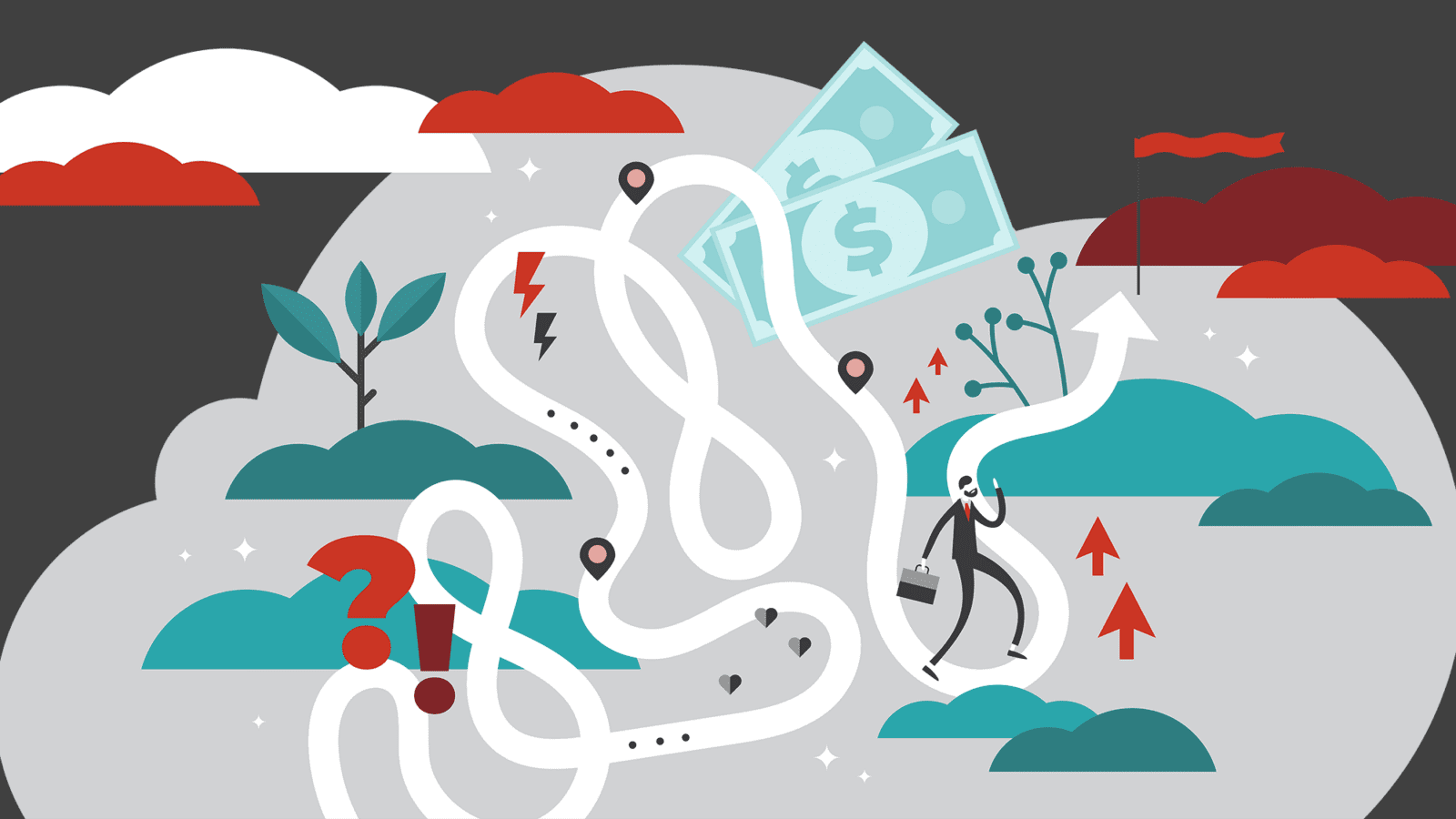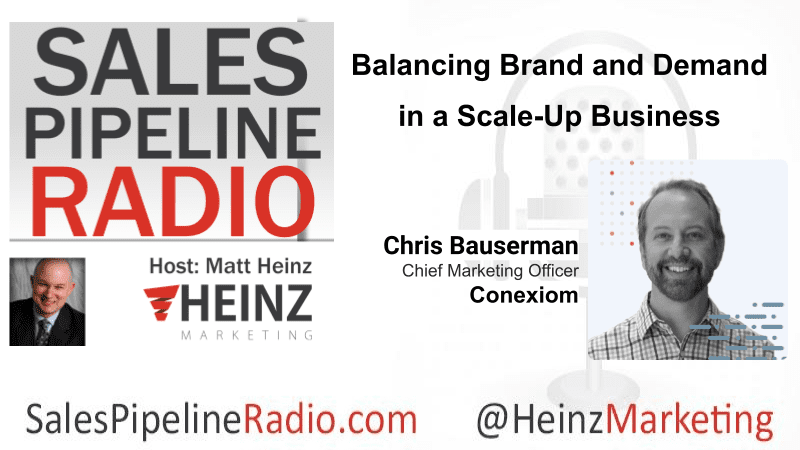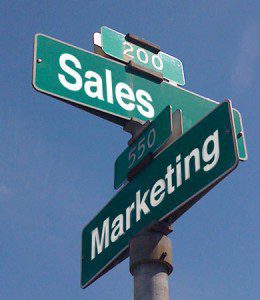Breaking Down the B2B Buyer’s Journey

By Josh Baez, Client Engagement Manager at Heinz Marketing
As we continue delving into the foundations of a modern B2B demand generation engine, the next thing we need to think about is the B2B buyer’s journey. (And if you missed the other blogs in this series, be sure to read those too: one on the ideal customer profile and another on addressing the buying committee.)
What is the B2B buyer’s journey?
What are your buyers actually doing when they make a decision? How are they acting? What are they thinking? What do they need to progress?
Every single buyer – whether B2B or B2C – goes through a journey of decision-making. The main difference is the B2B buyer’s journey is much more complicated. If you’ve read my blog about How to Market and Sell to the B2B Buying Committee, then you know just how complex a B2B purchase decision can be – in fact today, it’s more complex than ever. And with the increasingly different buying scenarios, stakeholders, purchase influencers, and buying units make the buyer’s journey less of a linear progression and more of a web of connections, influences, and decisions.
But even amidst the chaos, there are still guiding principles of the B2B buyer’s journey marketers and sellers can – and should – be aware of. Because now more than ever, buyers need our guidance to help enable better decisions. And in order for you to strategically act on those pivotal moments, you must first be able to identify, define, and map the individual components that make those moments possible.
8 core components
In this blog post, let’s break down the B2B buyer’s journey into 8 core components:
- The buying stages
- The buying participants
- The buyer’s needs
- The buyer’s questions
- The buyer’s actions
- Our goals
- Messaging and content
- Marketing and sales processes
That list might seem daunting, but I promise you it isn’t. But before we go further, it’s also really important to know the B2B buyer’s journey isn’t as simple as we’ve broken it out here. And there’s obviously going to be a lot of nuances – maybe even differences – especially as you start to build your own buyer’s journey for your audiences.
What’s most important for this exercise is to understand where you should – at the very least – start from. Because once you establish your foundations, it becomes much easier to mold your buyer’s journey in much more thoughtful, strategic way.
Now, with that out of the way, let’s dive in!
1. The buying stages
You might already be familiar with the stages of the B2B buyer’s journey, but a refresher never hurts! We think about the buyer’s journey in 3 primary stages: Awareness, Consideration, and Decision.
You might also recognize these stages as the Top, Middle, and Bottom stages of the sales funnel. Regardless of what you call them, you should know each stage is centered around a specific action or state the buyer is in. And these stages help us, as sellers and marketers, to better understand what our buyers are looking for, what questions they have, and what they need to move on to the next stage.
- In the awareness stage, your buyer might be demonstrating the symptoms of a challenge. They may or may not be aware of certain issues in their status quo. And they aren’t sure how to best address what they’re feeling – or if what they’re feeling needs to even be addressed at all.
- In the consideration stage, your buyer is aware of their challenge and they are actively looking for solutions that address it. They’ve committed to the idea that they need to solve their problems, but they still aren’t entirely sure of what direction to go in or what solutions to pursue.
- In the decision stage, your buyer has their shortlist of solutions and they are ready to make a final purchase decision.
The rest of the components in the buyer’s journey relies on these 3 stages. So keep that in mind as we move forward!
2. The buying participants
Before we get too far, let’s think about the personas involved in each stage of the B2B buyer’s journey.
This is where it may get a little tricky. Not every persona is active at every stage of the buyer’s journey. For example, a CXO might be heavily involved in the decision stage, but nearly non-existent in the consideration stage. Meanwhile, a mid-level manager might be highly active in every stage.
And to make matters more complicated, each persona has their own set of needs, questions, and actions at each stage of the buyer’s journey. And to effectively map your buyer’s journey, it all comes down to how well you know your customers.
Understanding who in the buying committee is most active and most engaged at each stage enables you provide the right information, the right content, with the right message, through the right channels to facilitate progression and conversion.
3. Your buyer’s needs
Persona-specific differences aside, let’s define what – generally speaking – your buyer’s needs and goals are at each stage. Doing so will help you to ensure that your sales and marketing tactics align to what your buyers want to achieve. And that can remove friction from the buyer’s journey and even accelerate its progress towards making a decision.
- In the awareness stage, your buyer needs help to diagnose their symptoms and to give a specific name to the challenges they’re facing. They need help to understand the implications of inaction. And their goal is to clearly define what needs to be addressed so they can more thoughtfully research and educate themselves about the solutions.
- In the consideration stage, your buyer needs to understand the benefits of action and the best approaches that will most effectively solve their problems. Their goal is to find and research right-fit companies that offer these products and services and match the maturity, values, and capabilities of their own organization.
- In the decision stage, your buyer needs to validate your company as the right solution for their business. They require you to help them understand the benefits, investment, and outcomes of the purchase so they feel confident when they sign on the dotted line.
4. The buyer’s questions
What questions are your buyers asking at each buying stage? What are they struggling with? What must they be able to answer in order to move forward?
Knowing what these questions are – and how to answer them – will help you better enable your buyers, show them relevant information, and make your sales and marketing tactics more relevant, thoughtful, and effective in the process. And while specific questions will rely on your own use case, there are broader questions your buyers will be asking themselves to also keep in mind.
- In the awareness stage, your buyer is likely asking more general questions focused less on a specific topic or subject matter and more on the specific pain points they’re experiencing or outcomes they want to achieve. They’re likely not using long-tail keywords or for specific functions or services. Instead, your buyer might be asking “How do I address these issues?” or even more simply, “How can I improve my organization?” They’re looking for information that helps educate. They’re not looking for something to buy.
- In the consideration stage, your buyer is asking questions that are beginning to get a little more specific and prescriptive. At this stage, they know what they need to search for. Now it’s just a matter of finding the right companies to research further. Because of this, they’re likely asking themselves what their peers have done, what they’ve tried, and what results they’ve seen. They’re looking for proof and validation to help create their shortlist of companies.
- In the decision stage, your buyer is asking about your other customers, your services, and your credibility. Are you actually going to make them successful? Can you really help them address their challenges and grow? They want to ensure they have any lingering questions and concerns answered and accounted for before they finally sign.
5. The buyer’s actions
In relation to your buyer’s questions, let’s think about the actions they’re taking at each stage.
- In the awareness stage, your buyer is conducting general, educational research to more clearly understand their problem. They’re reading blogs, downloading assets, listening to podcasts, and maybe even signing up for educational webinars with the intent to learn more about their pain points and what they can do to address them.
- In the consideration stage, after they’re made aware of their challenges, your buyer is beginning to evaluate specific solutions to find the best fit for their company. They’re researching specific use cases, tools and solutions, and capabilities. And they’ve likely started to read more case studies and product reviews.
- In the decision stage, your buyer is making their shortlist of solutions, talking with sales reps, and are getting ready to make that final purchase decision. They’re looking for that final push that helps bring one company above the others they’re looking at.
By now, we’ve been focused entirely on the buyer. But how do you apply what’s above to your actual go-to-market plan? Let’s explore that in the remaining 3 components.
6. Our goals
We know what our buyers need, ask, and do at each stage of the buyer’s journey. But how can we enable our buyers to provide richer, more meaningful experiences that can accelerate these outcomes?
- In the awareness stage, our goals are to help the buyer to validate their problems, communicate to them why they can’t risk inaction, and to help them give a name to their symptoms. In the awareness stage, our role is entirely educational and value-driven. We don’t want to overwhelm our buyers or risk giving a bad first impression. Therefore, our role at the beginning of the buyer’s journey is really subject matter expert and guide, helping our buyers make sense of where they are and where they need to go.
- In the consideration stage, our goals are to prove to the buyer why and how our solution is good fit for their organization. And to get our solution onto their shortlist for the final decision. Here, we want to start interspersing more practical assets like case studies and use cases in our messages to our buyers. They know what they need to be addressed, now it’s just a matter of us proving that we’re able to practice what we preach.
- In the decision stage, our goal is to give the buyer the right push and validation they need to sign with us, and we should be doing everything we can to affirm their amazing decision.
7. Messaging and content
Stemming from our goals, let’s think about the messaging and content needed at each stage of the buyer’s journey. While the specific messaging and content will rely on your company’s products and services, industry, and buyer personas, we can still think about the role these pieces must play at each stage.
- In the awareness stage, messaging and content should be entirely challenge and goal-oriented, educational, and thought leadership-focused, while remaining wholly product-agnostic. Top-funnel messaging and content is written to generate awareness of a need or opportunity a buyer may not even know exists. In terms of content, think tip sheets, blog posts, eBooks and guides, infographics, research reports, and educational webinars. In terms of messaging, answer the question for your buyer: “What’s in it for me?”
- In the consideration stage, messaging and content should relate to your buyer’s challenges and also help validate your company as a contender for their shortlist. Middle-funnel messaging and content is written to drive the consideration of your solution, so think about practical how-to’s, best practice guides, case studies and use cases, and data sheets. Lead with messaging that not only raises a question, but also provides a solution. We want to show our prospects why and how our solution is their best option.
- In the decision stage, messaging and content should be very specific to your products and services with an emphasis on how you expect to help your buyer achieve success. Bottom-funnel messaging and content is written to validate and push your solution above the others in consideration. Utilize product webinars, case studies, data sheets, demo videos, and ROI calculators that not only showcase what you do, but the outcomes you enable as well.
8. Marketing and sales processes
Finally, let’s wrap things up by talking about the processes involved from both marketing and sales. Unfortunately this isn’t as easy as it once was.
What are marketing’s and sales’ roles at each stage? What are they responsible for in order to move the needle?
For your organization to truly act on the insights of your buyer’s journey, you must ensure both marketing and sales understand and agree on what’s expected of them–That they know who they need to target, how leads get created, how they’re qualified, and how they’re moved from one stage to the next. If an agreement isn’t reached on these fundamental processes, you risk fragmenting your buyers’ experiences and damaging your reputation and credibility in the process.
B2B sales and marketing is not as black and white as it once was. And the separation between each stage of the buyer’s journey has only gotten blurrier as buying decisions grow more complex.
Therefore, in order to truly enable your buyers today, marketing and sales must be tightly united under a single revenue roof. They must collaborate to remove friction from the buyer’s journey in every way they can. Luckily, mapping your buyer’s journey with these key components is a great first step towards achieving that unity. Only then can you start to create frictionless experiences for your buyers as they move through each stage of the buyer’s journey and closer towards finally making that highly sought-after decision.




